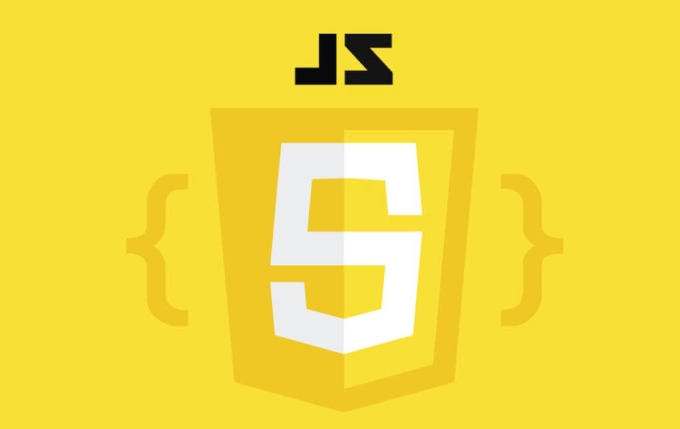Real-time communication with WebSockets: a hands-on JS roundup
Jul 14, 2025 am 01:45 AMWebSockets enable real-time, two-way communication for web apps. To use them in JavaScript: 1) Create a WebSocket instance with new WebSocket('wss://your-websocket-server.com') and handle connection states via events like onopen. 2) Send messages using socket.send() and receive them using socket.onmessage. 3) Handle errors and disconnections with onerror and onclose, and implement reconnection logic with exponential backoff. 4) Close connections properly with socket.close() to avoid leaks, especially in SPAs.

If you're looking to build real-time features into your web app — like live chat, notifications, or collaborative tools — WebSockets are a solid choice. Unlike HTTP requests that end after a response, WebSockets keep a persistent connection open between the client and server, allowing for instant two-way communication. In this post, I’ll walk through how to get started with WebSockets using JavaScript, from basic setup to handling messages and reconnecting gracefully.

Setting up a WebSocket connection in JS
Getting a WebSocket connection up and running is pretty straightforward on the client side. You just need to create a new WebSocket instance and pass it the URL of your server:

const socket = new WebSocket('wss://your-websocket-server.com');Use ws:// for unencrypted connections and wss:// for secure ones (which you should always aim for in production).
Once created, the WebSocket goes through a few ready states: connecting, open, closing, and closed. You can check these via socket.readyState, but more commonly, you'll respond to them using event handlers like onopen:

socket.onopen = () => {
console.log('WebSocket connection established');
};You don’t need a lot of boilerplate to start — just connect, listen for events, and send data when needed.
Sending and receiving messages
WebSockets aren’t useful unless they can actually exchange data. Once the connection is open, you can send messages using the .send() method:
socket.send('Hello server!');On the receiving end, you use the onmessage handler:
socket.onmessage = (event) => {
console.log('Message from server:', event.data);
};Messages can be text, JSON strings, or even binary data like blobs or array buffers. Most of the time, though, you’ll be sending structured data as JSON:
// Sending an object
socket.send(JSON.stringify({ type: 'chat', message: 'Hi there' }));
// Receiving and parsing
socket.onmessage = (event) => {
const data = JSON.parse(event.data);
console.log(data.type, data.message);
};Make sure both client and server agree on the format — otherwise, things can get confusing fast.
Handling errors and disconnections
Real-time connections can drop for all kinds of reasons — network issues, server crashes, timeouts. It’s important to handle those gracefully.
To catch errors, set an onerror handler:
socket.onerror = (error) => {
console.log('WebSocket error:', error);
};And for disconnections, use onclose:
socket.onclose = (event) => {
console.log('Connection closed:', event.reason);
};But what if you want to automatically reconnect? Here's a simple pattern:
- Use a flag to track whether a reconnection is already in progress.
- Wait a short delay before retrying, and increase it each time (exponential backoff).
- Optionally limit the number of retries.
Example:
let reconnectAttempts = 0;
const maxRetries = 5;
function connect() {
const socket = new WebSocket('wss://your-websocket-server.com');
socket.onclose = () => {
if (reconnectAttempts < maxRetries) {
setTimeout(() => {
reconnectAttempts ;
connect();
}, 1000 * Math.pow(2, reconnectAttempts));
}
};
}
connect();This helps avoid hammering the server while still giving users a chance to reconnect without refreshing the page.
Closing connections properly
When you no longer need the connection — say, when a user logs out or navigates away — make sure to close it explicitly:
socket.close();
This frees up resources and prevents memory leaks. If you’re building a single-page app (SPA), remember to clean up WebSocket instances when components unmount or routes change.
Also, avoid creating multiple WebSocket instances unnecessarily. A single connection usually suffices unless you have separate services or protocols to communicate with.
That's basically it. WebSockets might seem tricky at first, especially if you're used to request-response patterns, but once you get the hang of opening the connection, sending/receiving messages, and handling disconnects, it becomes pretty intuitive. There are also libraries like Socket.IO or SignalR that add extra layers (like fallback transports and rooms), but knowing how raw WebSockets work gives you a better foundation to understand and debug those higher-level tools.
The above is the detailed content of Real-time communication with WebSockets: a hands-on JS roundup. For more information, please follow other related articles on the PHP Chinese website!

Hot AI Tools

Undress AI Tool
Undress images for free

Undresser.AI Undress
AI-powered app for creating realistic nude photos

AI Clothes Remover
Online AI tool for removing clothes from photos.

Clothoff.io
AI clothes remover

Video Face Swap
Swap faces in any video effortlessly with our completely free AI face swap tool!

Hot Article

Hot Tools

Notepad++7.3.1
Easy-to-use and free code editor

SublimeText3 Chinese version
Chinese version, very easy to use

Zend Studio 13.0.1
Powerful PHP integrated development environment

Dreamweaver CS6
Visual web development tools

SublimeText3 Mac version
God-level code editing software (SublimeText3)

Hot Topics
 How does garbage collection work in JavaScript?
Jul 04, 2025 am 12:42 AM
How does garbage collection work in JavaScript?
Jul 04, 2025 am 12:42 AM
JavaScript's garbage collection mechanism automatically manages memory through a tag-clearing algorithm to reduce the risk of memory leakage. The engine traverses and marks the active object from the root object, and unmarked is treated as garbage and cleared. For example, when the object is no longer referenced (such as setting the variable to null), it will be released in the next round of recycling. Common causes of memory leaks include: ① Uncleared timers or event listeners; ② References to external variables in closures; ③ Global variables continue to hold a large amount of data. The V8 engine optimizes recycling efficiency through strategies such as generational recycling, incremental marking, parallel/concurrent recycling, and reduces the main thread blocking time. During development, unnecessary global references should be avoided and object associations should be promptly decorated to improve performance and stability.
 How to make an HTTP request in Node.js?
Jul 13, 2025 am 02:18 AM
How to make an HTTP request in Node.js?
Jul 13, 2025 am 02:18 AM
There are three common ways to initiate HTTP requests in Node.js: use built-in modules, axios, and node-fetch. 1. Use the built-in http/https module without dependencies, which is suitable for basic scenarios, but requires manual processing of data stitching and error monitoring, such as using https.get() to obtain data or send POST requests through .write(); 2.axios is a third-party library based on Promise. It has concise syntax and powerful functions, supports async/await, automatic JSON conversion, interceptor, etc. It is recommended to simplify asynchronous request operations; 3.node-fetch provides a style similar to browser fetch, based on Promise and simple syntax
 JavaScript Data Types: Primitive vs Reference
Jul 13, 2025 am 02:43 AM
JavaScript Data Types: Primitive vs Reference
Jul 13, 2025 am 02:43 AM
JavaScript data types are divided into primitive types and reference types. Primitive types include string, number, boolean, null, undefined, and symbol. The values are immutable and copies are copied when assigning values, so they do not affect each other; reference types such as objects, arrays and functions store memory addresses, and variables pointing to the same object will affect each other. Typeof and instanceof can be used to determine types, but pay attention to the historical issues of typeofnull. Understanding these two types of differences can help write more stable and reliable code.
 JavaScript time object, someone builds an eactexe, faster website on Google Chrome, etc.
Jul 08, 2025 pm 02:27 PM
JavaScript time object, someone builds an eactexe, faster website on Google Chrome, etc.
Jul 08, 2025 pm 02:27 PM
Hello, JavaScript developers! Welcome to this week's JavaScript news! This week we will focus on: Oracle's trademark dispute with Deno, new JavaScript time objects are supported by browsers, Google Chrome updates, and some powerful developer tools. Let's get started! Oracle's trademark dispute with Deno Oracle's attempt to register a "JavaScript" trademark has caused controversy. Ryan Dahl, the creator of Node.js and Deno, has filed a petition to cancel the trademark, and he believes that JavaScript is an open standard and should not be used by Oracle
 React vs Angular vs Vue: which js framework is best?
Jul 05, 2025 am 02:24 AM
React vs Angular vs Vue: which js framework is best?
Jul 05, 2025 am 02:24 AM
Which JavaScript framework is the best choice? The answer is to choose the most suitable one according to your needs. 1.React is flexible and free, suitable for medium and large projects that require high customization and team architecture capabilities; 2. Angular provides complete solutions, suitable for enterprise-level applications and long-term maintenance; 3. Vue is easy to use, suitable for small and medium-sized projects or rapid development. In addition, whether there is an existing technology stack, team size, project life cycle and whether SSR is needed are also important factors in choosing a framework. In short, there is no absolutely the best framework, the best choice is the one that suits your needs.
 Understanding Immediately Invoked Function Expressions (IIFE) in JavaScript
Jul 04, 2025 am 02:42 AM
Understanding Immediately Invoked Function Expressions (IIFE) in JavaScript
Jul 04, 2025 am 02:42 AM
IIFE (ImmediatelyInvokedFunctionExpression) is a function expression executed immediately after definition, used to isolate variables and avoid contaminating global scope. It is called by wrapping the function in parentheses to make it an expression and a pair of brackets immediately followed by it, such as (function(){/code/})();. Its core uses include: 1. Avoid variable conflicts and prevent duplication of naming between multiple scripts; 2. Create a private scope to make the internal variables invisible; 3. Modular code to facilitate initialization without exposing too many variables. Common writing methods include versions passed with parameters and versions of ES6 arrow function, but note that expressions and ties must be used.
 Handling Promises: Chaining, Error Handling, and Promise Combinators in JavaScript
Jul 08, 2025 am 02:40 AM
Handling Promises: Chaining, Error Handling, and Promise Combinators in JavaScript
Jul 08, 2025 am 02:40 AM
Promise is the core mechanism for handling asynchronous operations in JavaScript. Understanding chain calls, error handling and combiners is the key to mastering their applications. 1. The chain call returns a new Promise through .then() to realize asynchronous process concatenation. Each .then() receives the previous result and can return a value or a Promise; 2. Error handling should use .catch() to catch exceptions to avoid silent failures, and can return the default value in catch to continue the process; 3. Combinators such as Promise.all() (successfully successful only after all success), Promise.race() (the first completion is returned) and Promise.allSettled() (waiting for all completions)
 What is the cache API and how is it used with Service Workers?
Jul 08, 2025 am 02:43 AM
What is the cache API and how is it used with Service Workers?
Jul 08, 2025 am 02:43 AM
CacheAPI is a tool provided by the browser to cache network requests, which is often used in conjunction with ServiceWorker to improve website performance and offline experience. 1. It allows developers to manually store resources such as scripts, style sheets, pictures, etc.; 2. It can match cache responses according to requests; 3. It supports deleting specific caches or clearing the entire cache; 4. It can implement cache priority or network priority strategies through ServiceWorker listening to fetch events; 5. It is often used for offline support, speed up repeated access speed, preloading key resources and background update content; 6. When using it, you need to pay attention to cache version control, storage restrictions and the difference from HTTP caching mechanism.






